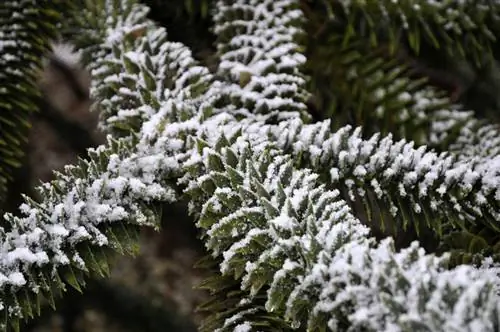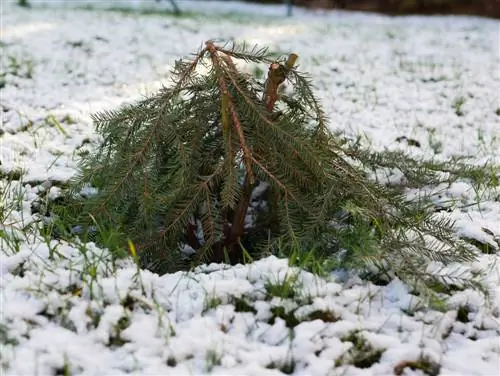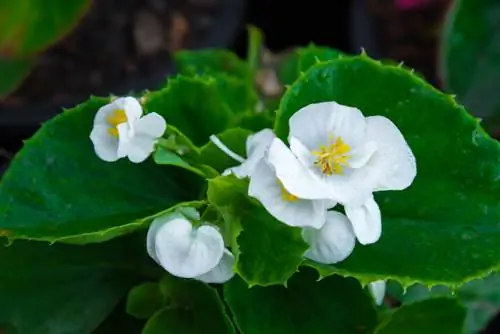- Author admin [email protected].
- Public 2023-12-16 16:46.
- Last modified 2025-01-23 11:20.
Montbretia originally thrives on the mild slopes of the South African mountains. The attractive flowering plant is therefore sun-hungry and heat-loving. But how frost hardy are the tuber plants and how do they have to be overwintered?

Are Montbretia hardy and how should you overwinter them?
Montbretias are only partially hardy and in mild regions require winter protection with leaves, bark mulch or compost. In harsh areas, the tubers should be dug up in autumn and overwintered indoors, frost-free.
Only hardy to a limited extent
As well as the Montbretie can cope with the greatest summer heat, deep frosts can also affect it. The flowering plants are only hardy to a limited extent and should be well protected in the cold season, even in mild regions. If deep frosts threaten and the ground freezes over a longer period of time down to the deeper areas, this damages the sensitive tubers.
In regions where winter temperatures only fall into the single-digit minus range, the Montbretias are still allowed to overwinter in the bed. In harsh areas, however, it is advisable to carefully dig up the stolons in autumn and store them in a cool place.
Ensure adequate winter protection
In the mild regions, the Montbretie needs a warm blanket to get through the winter well. Cover the plants that will not be cut back in this case with a thick layer:
- Leaves
- Bark mulch
- Compost
and secure this cold protection against drifts with brushwood. The natural materials rot slowly and at the same time provide the highly depleting plants with valuable nutrients.
Winter Montbretien indoors
Even in mild regions, the Montbretias do not always survive the winter in the flower bed unscathed. If you want to be on the safe side, it is advisable to dig up the tubers in autumn and overwinter them indoors. Leave as much substrate as possible on the sensitive tubers so that they do not dry out.
Lay the stolons in a dark, cool and frost-free place in the house. A darkened basement room or garage is well suited, as it is usually a little cooler than the basement.
Tip
Applying fertilizer early in March or April stimulates plant growth. In order to protect the sensitive tubers, the fertilizer should under no circumstances be incorporated.






